Over"whale"ming discovery! A team of scholars from NCKU and the National Museum of Natural Science jointly uncovered the most complete whale fossil in Taiwan's history
Written by Atelier Future. Image credit to Dr. Tzu-Ruei Yang.
The most complete whale fossil in the history of Taiwan appeared in Hengchun, Pingtung! Tzu-Ruei Yang, an assistant curator at the Department of Geology of the National Museum of Natural Science (NMNS) and an adjunct assistant professor at the Department of Earth Sciences at National Cheng Kung University, led 16 NCKU students this summer to cooperate with scholars from NMNS, overseas scholars, and students from various Taiwan’s universities and high schools, to uncover a whale fossil specimen that dated back to more than 85,000 years ago. With an estimated length of more than 15 meters and a degree of completeness of more than 70%, the fossil whale will help researchers to understand how whales adapt to the environmental changes from the Ice Age to the present.
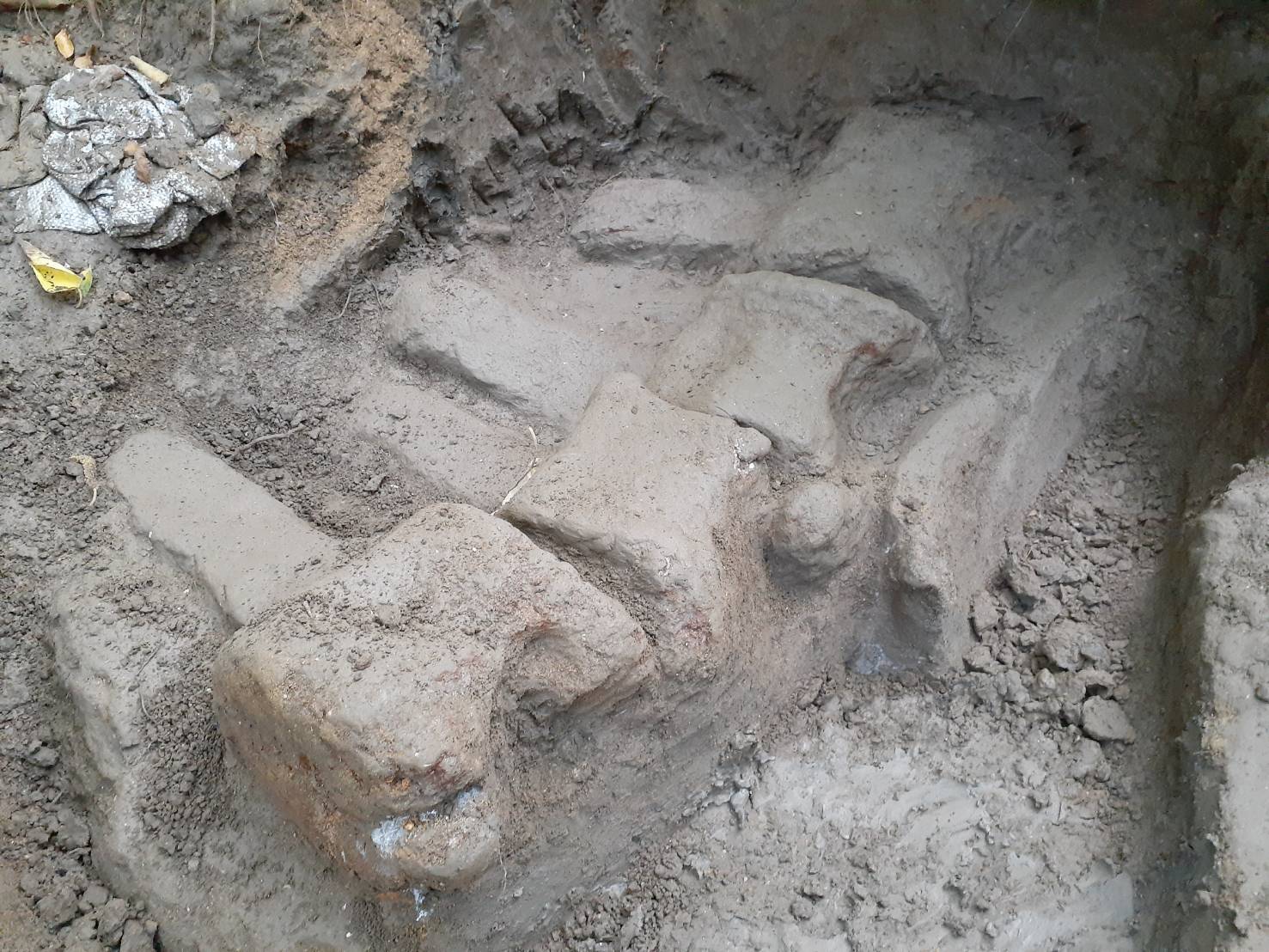
Whale bones found by the excavation team in Tougou, Hengchun, Pingtung
"This fossil excavation is the second time for large mammal fossils to be discovered in Taiwan since the discovery of a rhinoceros fossil from Zuojhen, Tainan in the 1970s." according to Prof Yang. This whale skeleton is estimated to longer than 15 meters, with well-preserved shoulder blades, upper and lower jawbones, and a consecutive tail vertebra. Although only the rear side of the skull is preserved, it is still considered complete. Based on the shape of the scapula, it is preliminarily speculated that this whale fossil may be a Late Pleistocene “Blue Whale" or "Humpback Whale" from more than 85,000 years ago since both large mammals have been recorded to be stranded along the coast of Taiwan.
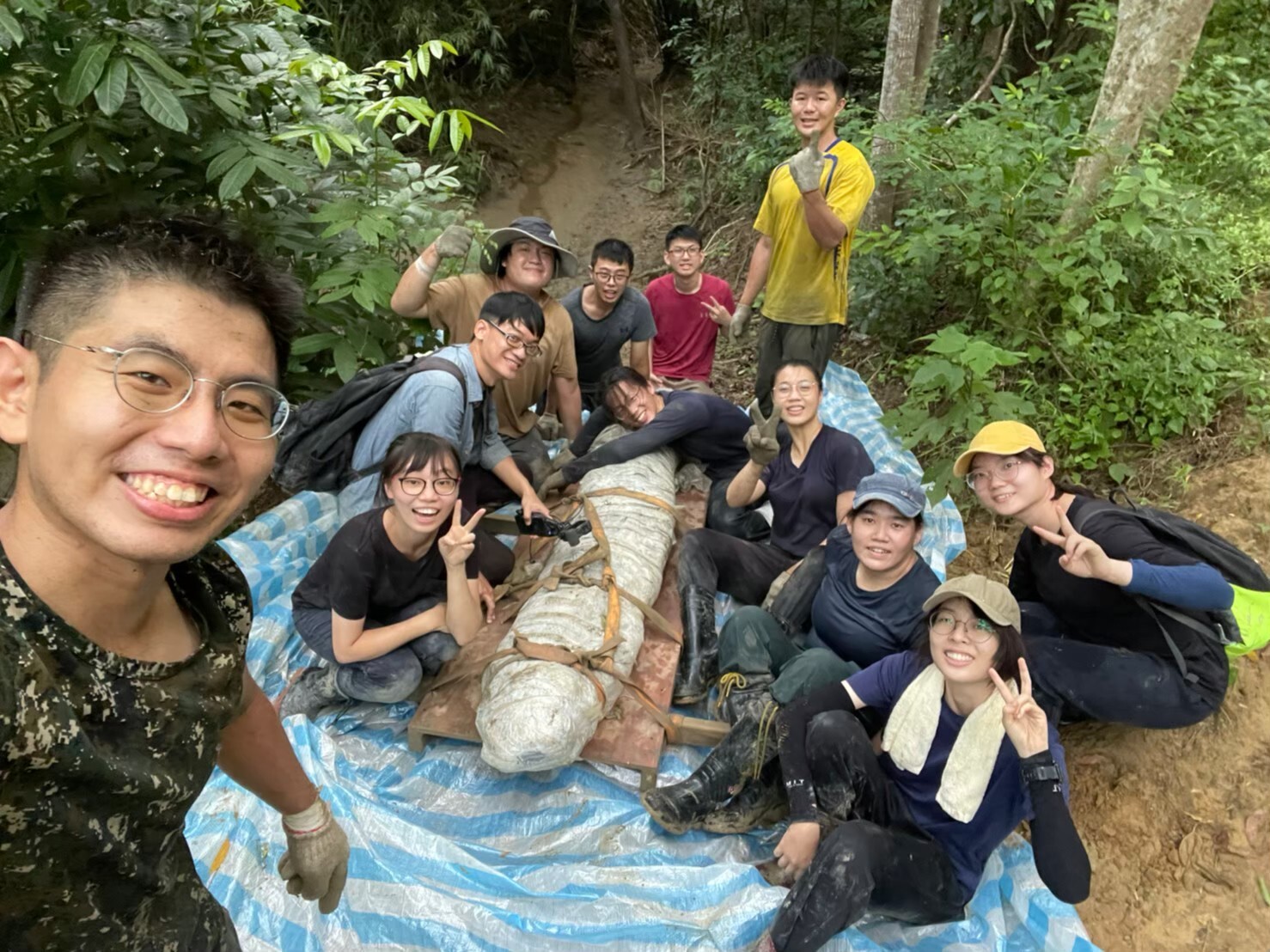
NCKU and NMNS, with scholars from Taiwan and abroad, discovered the most complete whale fossil in Taiwan’s history together
The members of the excavation team include Tzu-Ruei Yang, adjunct assistant professor at the Department of Earth Sciences at National Cheng Kung University and assistant curator at the Department of Geology of the National Museum of Natural Science; Dr. Chiou-Ju Yao, assistant curator at the Biology Department of the National Museum of Natural Science; PD Dr. Anneke van Heteren, from the Bavarian State Collection of Zoology, scholars from Taiwan’s universities, and a high school student. Among them, NCKU students accounted for 60% of the team, including Dai-An Li, Ting-An Lee, Pin-Yen Chiu, Pei-Jhen Lin, Po-Heng Kao, Zong-Dai Chen, Yun-Ju Chen, Ching-Wei Chang, Yu-Hsin Huang, Chieh-Yu Huang, Yu-Tsung Tai, Cheng-Ying Chung from the Department of Earth Science; Chi-Jhen Fan from the Department of Life Science; Tze-Yee Leung from the Department of History, Wen-Po Chou from the Institute of Archaeology and Ching-Jen Chuang from the Institute of Electrical Engineering.
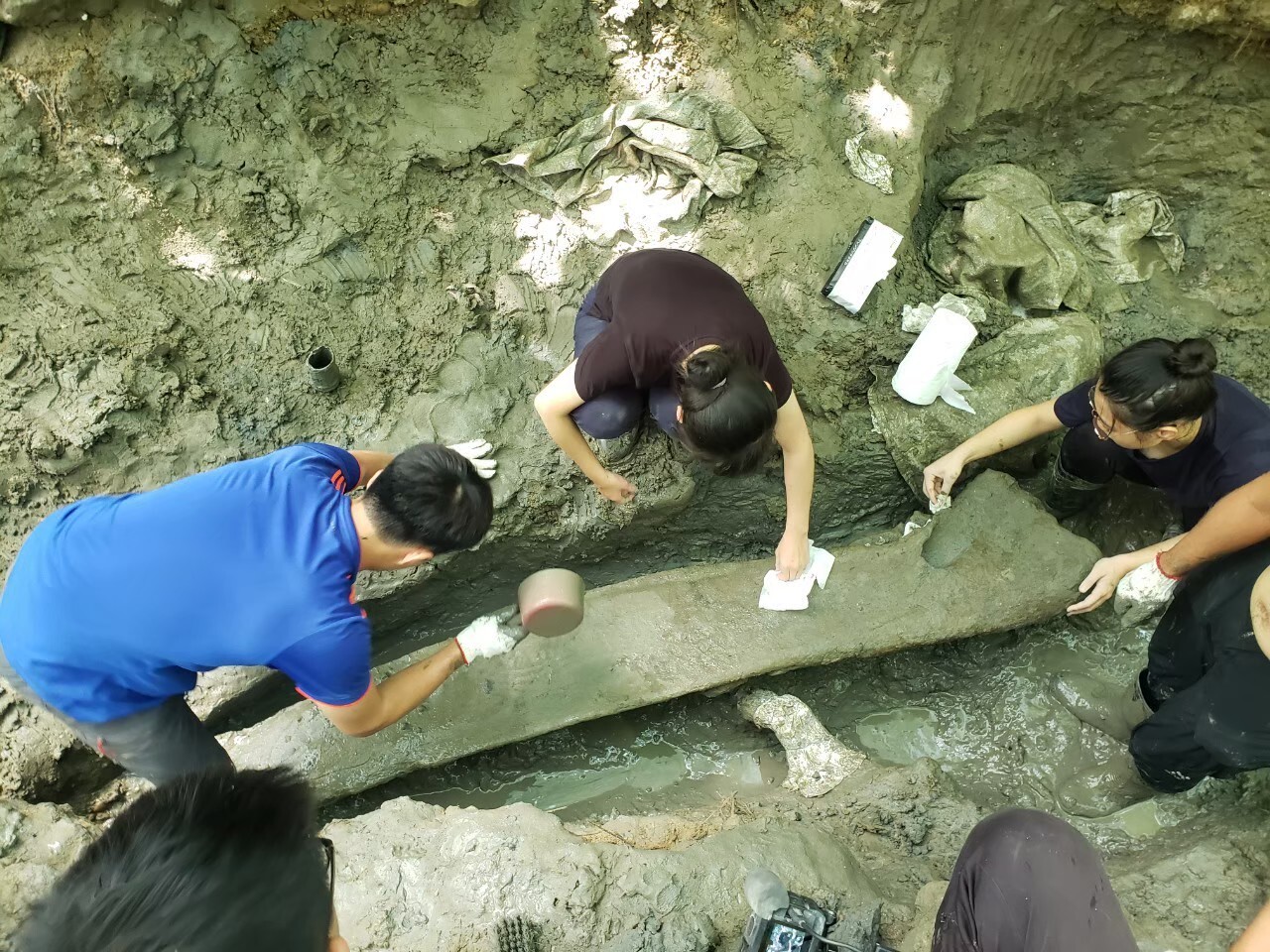
The excavation team carefully removed water and dirt from the lower jawbone fossil before jacketing it
Wen-Po Chou from NCKU’s Institute of Archaeology is one of the members of the whale fossil excavation team. He shared that the Tougou area in Hengchun, Pingtung contains a variety of fossils of shells, sharks, crabs, and whales. Earlier this year, he and local collector Yu-Mu Chang went to the area for treasure hunting, and immediately contacted Prof. Yang to investigate together after returning from the site. Unexpectedly, the team discovered four ribs protruding from the surface in the depths of the river valley in early May. After a preliminary excavation, they found more bones buried in the ground.
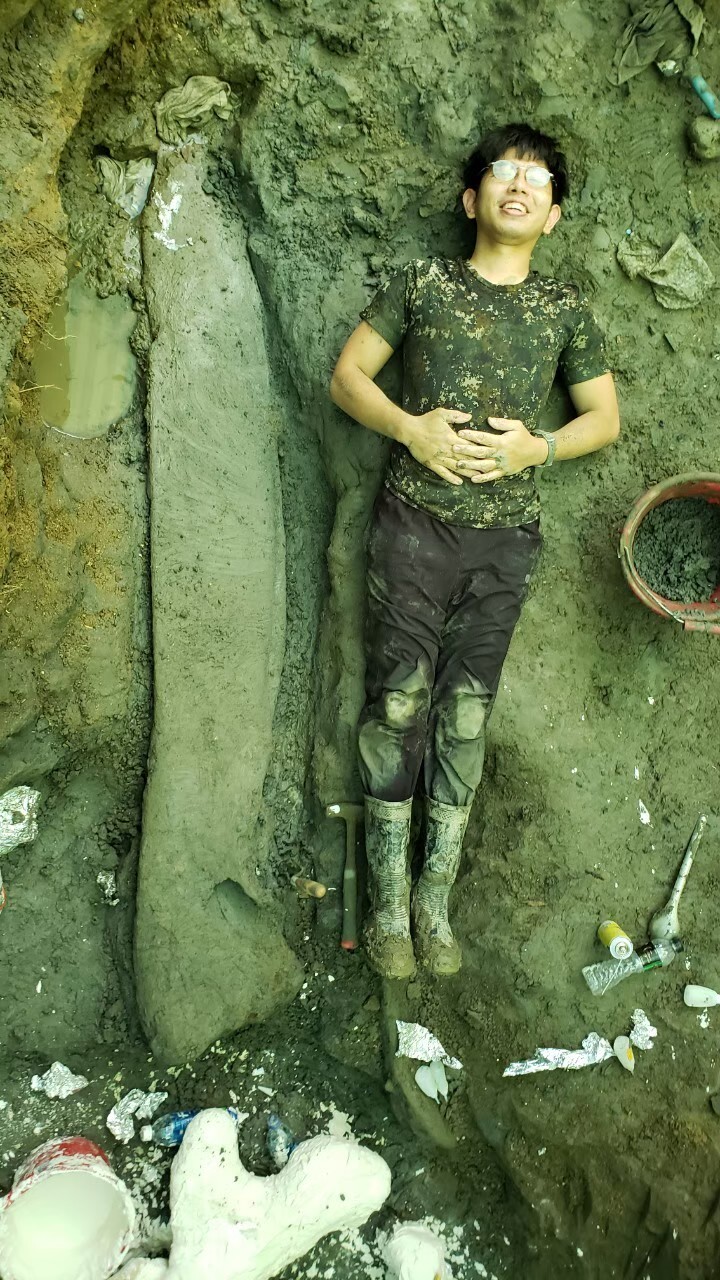
The lower jawbone of the whale fossil was 223 centimeters long and weighed 334 kilograms
During the excavation, the heaviest fossil which is the whale's lower jawbone weighed 334 kilograms and was 223 centimeters long. For this reason, the members ordered a wooden stretcher that could be carried by 8 people, and 12 people took turns carrying it together. Pei-Jhen Lin from the Department of Earth Science described how the members handled the jawbone, they lifted the stretcher at 11 am, moved and carried it step by step over the rough terrain, and only reached the exit at 6 pm. The whole team was very moved at that moment. Ching-Jen Chuang, from the Institute of Electrical Engineering, who is also a rescue volunteer at the Marine Biology and Cetacean Research Center, shared that the jaws of cetaceans and dolphins he had seen in the past were no larger than 1 meter. It is very rare to find such a huge fossil jawbone.
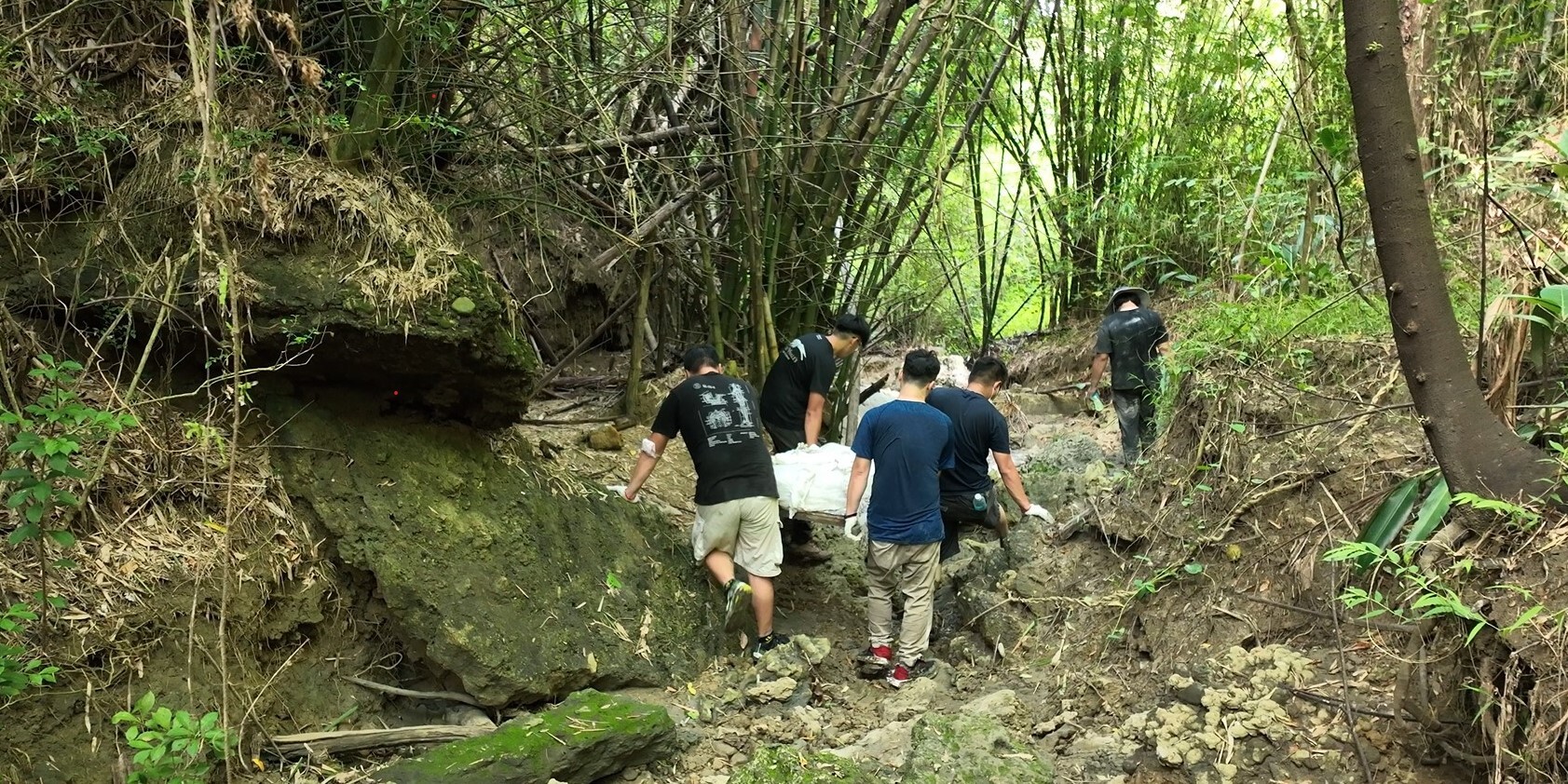
The environment of the river valley is lush, wet, and rugged
Chi-Jhen Fan from the Department of Life Sciences, Dai-An Li from the Department of Earth Sciences, and Yun-Ju Chen from the Institute of Earth Sciences shared what they had learned through the large-scale fossil excavation, discovered that the Department of Life Sciences and the Department of Earth Sciences can cooperate to provide their expertise and they can learn more by working onsite. Prof. Yang said that after the fossils were unearthed, plaster was needed to consolidate the structure. In the beginning, military backpacks with weights of more than 100 kilograms were used to carry the plaster back and forth manually. Faced with dense vegetation and broken terrain, the students presented the thought of opening new roads or using cables to carry them and tried countless methods. Despite the hot and humid environment and the infestation of mosquitoes, the students were still willing to take part in this excavation during their summer vacation. Some students felt that the opportunity was rare, and they would participate in another excavation again, Prof. Yang expressed his deep admiration for the students.
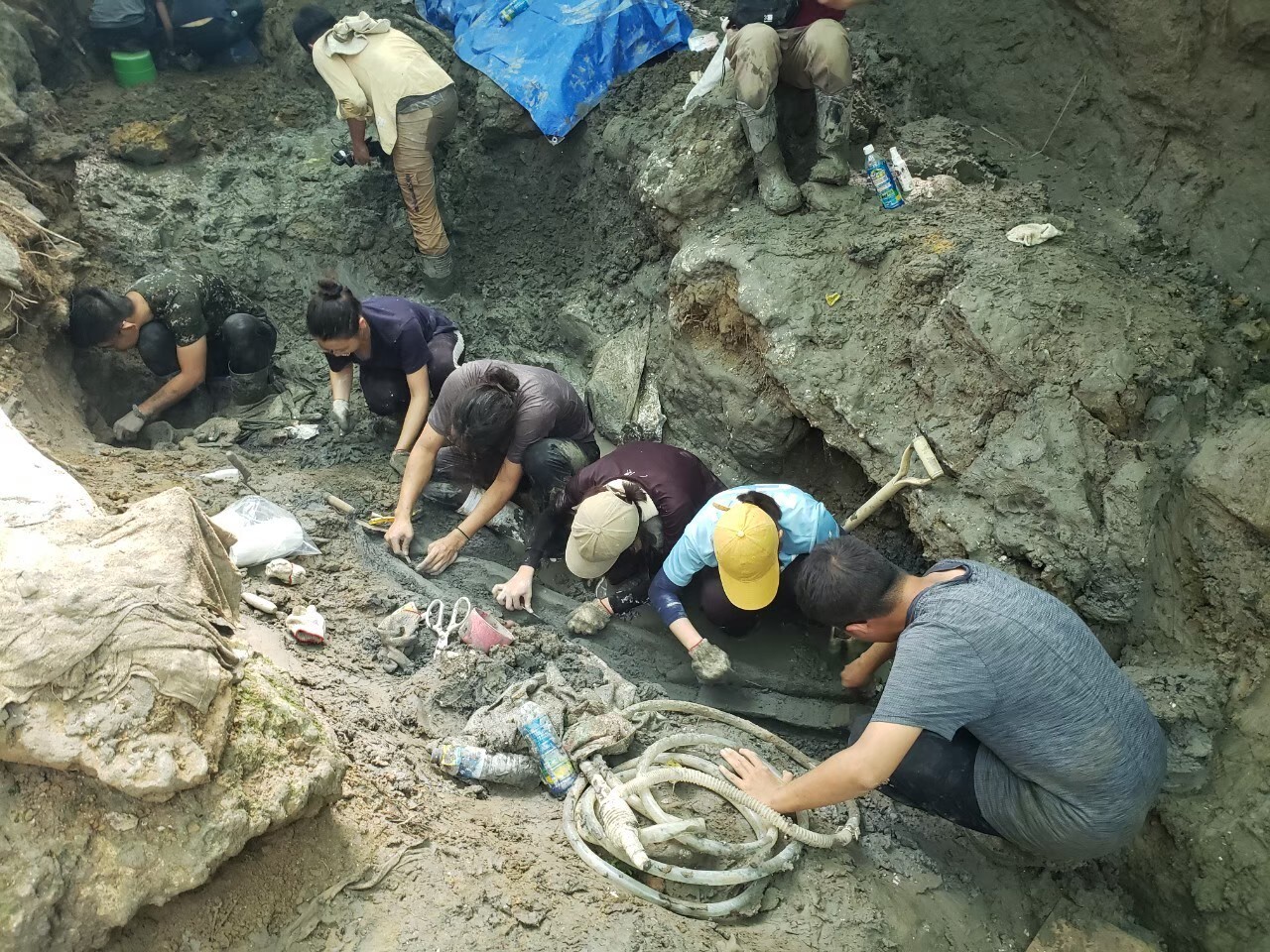
After 90 days of intensive excavation, the excavation team finally fully recovered the whale fossil in October this year
Regarding the subsequent processes of the fossils, Prof. Yang said that the whale bone fossils have been safely transported back to NMNS for the Department of Geology of the Museum to conduct restoration and research work. He anticipates the day when his findings were published in academic journals, to share with the wider community about the wonders of the natural world.
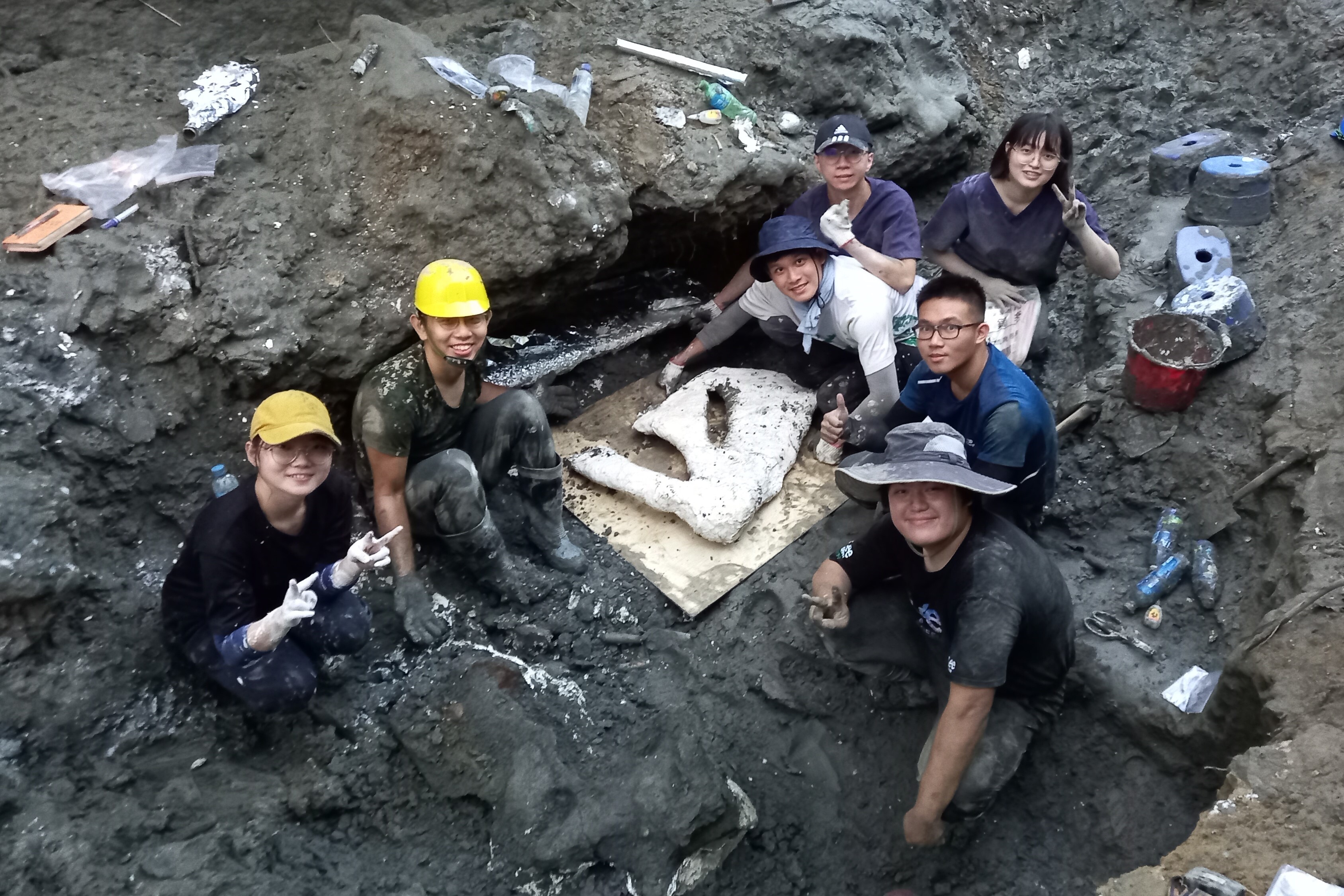
Whale scapula fossils, ready to be shipped out of the river valley after casting
NCKU team member Wen-Po Chou from the Institute of Archaeology, who operates a Youtube Channel with the name "方塊酥" (Cubic Pastry), revealed the onsite situation of the paleontologists digging in the field in the form of videos. For details, please see the video link.
【Excavation Team Members】
National Museum of Natural Sciences: Shih-Wei Wang, Chun-Hsiang Chang, Kun-Wei Chung, Kun-Ming Chuang, Shao-Kang Hu, Chiou-Ju Yao, Tzu-Ruei Yang.
Prof. Tzu-Ruei Yang’s Research Team: Ching Chen, Kuan-Yu Chou, Hsiao-Jou Wu
Bavarian State Collection of Zoology: Anneke van Heteren
National Taiwan Normal University: Sin-Bo Guan
Chinese Culture University: Shi-Xian Lien
National Chung Hsing University: Hui-Chun Wu
National Cheng Kung University: Dai-An Li, Ting-An Lee, Wen-Po Chou, Pin-Yen Chiu, Pei-Jhen Lin, Chi-Jhen Fan, Po-Heng Kao, Zong-Dai Chen, Yun-Ju Chen, Tse-Yee Leung, Ching-Jen Chuang, Ching-Wei Chang, Yu-Hsin Huang, Chieh-Yu Huang, Yu-Tsung Tai, Cheng-Ying Chung.
Tunghai University: Hsin-Ying Fu
Asia University: Ting-Hsuan Chu, Yu-Yun Chang
Washington High School: Chun-Yu Su
Mr. Fossil: Yu-Fu (Kiko) Hsiao, Tsung-Yu (Robin) Hsiao, Shu-Chuan (Joann) Chen
Provider:
News Center
Date:
2022-12-09



